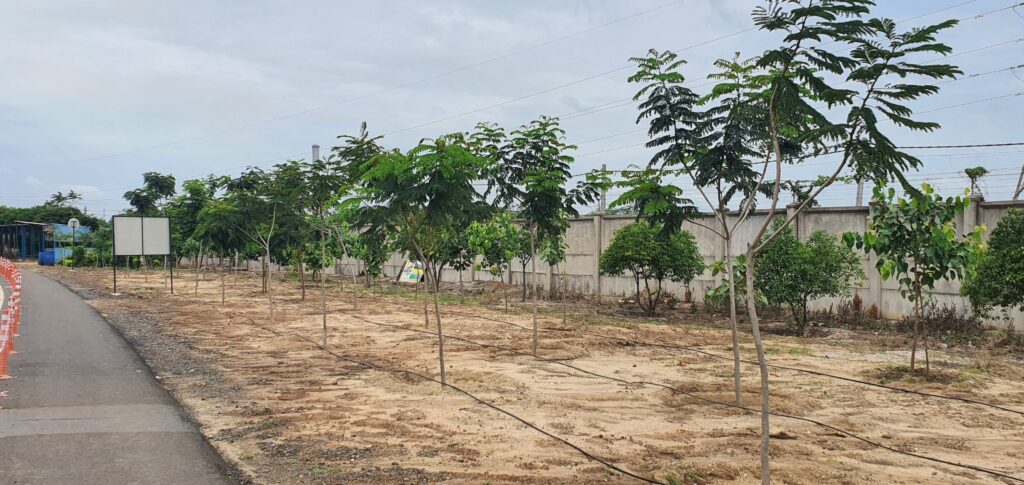By Green Tech Pro – Led by Mr. Ravindra Gurav, MSc Horticulture
In today’s industrial landscape, environmental compliance isn’t just a legal obligation; it’s a commitment to sustainable development and community well-being. One of the most effective ways industries can meet these obligations is through the establishment of Industrial Green Belts.
🌱 What Is an Industrial Green Belt?
An Industrial Green Belt is a designated area of vegetation surrounding industrial facilities. Its primary functions include:
- Pollution Mitigation: Absorbing air pollutants like CO₂ and SO₂.
- Noise Reduction: Acting as a barrier to industrial noise.
- Erosion Control: Preventing soil erosion and promoting groundwater recharge.
- Aesthetic Enhancement: Improving the visual appeal of industrial zones.
These green spaces are not merely decorative; they are essential components of an industry’s environmental management plan.
📜 Regulatory Framework in India
In India, the Ministry of Environment, Forest and Climate Change (MoEFCC) mandates the development of green belts around industrial sites. Key guidelines include:
- Width of Green Belt: A minimum of 500 meters around the industrial boundary; 1 km if the industry emits odorous pollutants.
- Species Selection: Preference for native, fast-growing tree species.
- Layout: Typically, a three-tier plantation system comprising trees, shrubs, and ground cover.
- Water Management: Utilizing treated wastewater for irrigation purposes.
These regulations ensure that industries contribute positively to the environment while operating efficiently.
🌳 Benefits of Industrial Green Belts
Implementing a green belt offers numerous advantages:
- Air Quality Improvement: Trees act as natural air filters.
- Noise Abatement: Dense vegetation reduces noise pollution.
- Biodiversity Support: Provides habitat for various species.
- Microclimate Regulation: Helps in temperature and humidity control.
🛠️ Best Practices for Green Belt Development
To establish an effective green belt, consider the following:
- Site Assessment: Analyze soil, climate, and topography.
- Species Selection: Choose native species suited to the local environment.
- Maintenance Plan: Regular watering, pruning, and monitoring.
- Community Involvement: Engage local communities in the plantation process.

Green Tech Pro, founded by Mr. Ravindra Gurav, an MSc in Horticulture, specializes in sustainable landscaping solutions tailored for industrial sectors. With a commitment to environmental excellence, Green Tech Pro offers:
- Green Belt Design & Implementation: Customized plans to meet regulatory requirements.
- Maintenance Services: Ensuring the longevity and health of green spaces.
- Consultancy: Expert advice on environmental compliance and best practices.
📞 Contact Us
For more information or to schedule a consultation:
📍 Location: Pune, Maharashtra, India
📧 Email: info@greentechpro.in
🌐 Website: www.greentechpro.in

Elaborative information on Industrial Green Belt